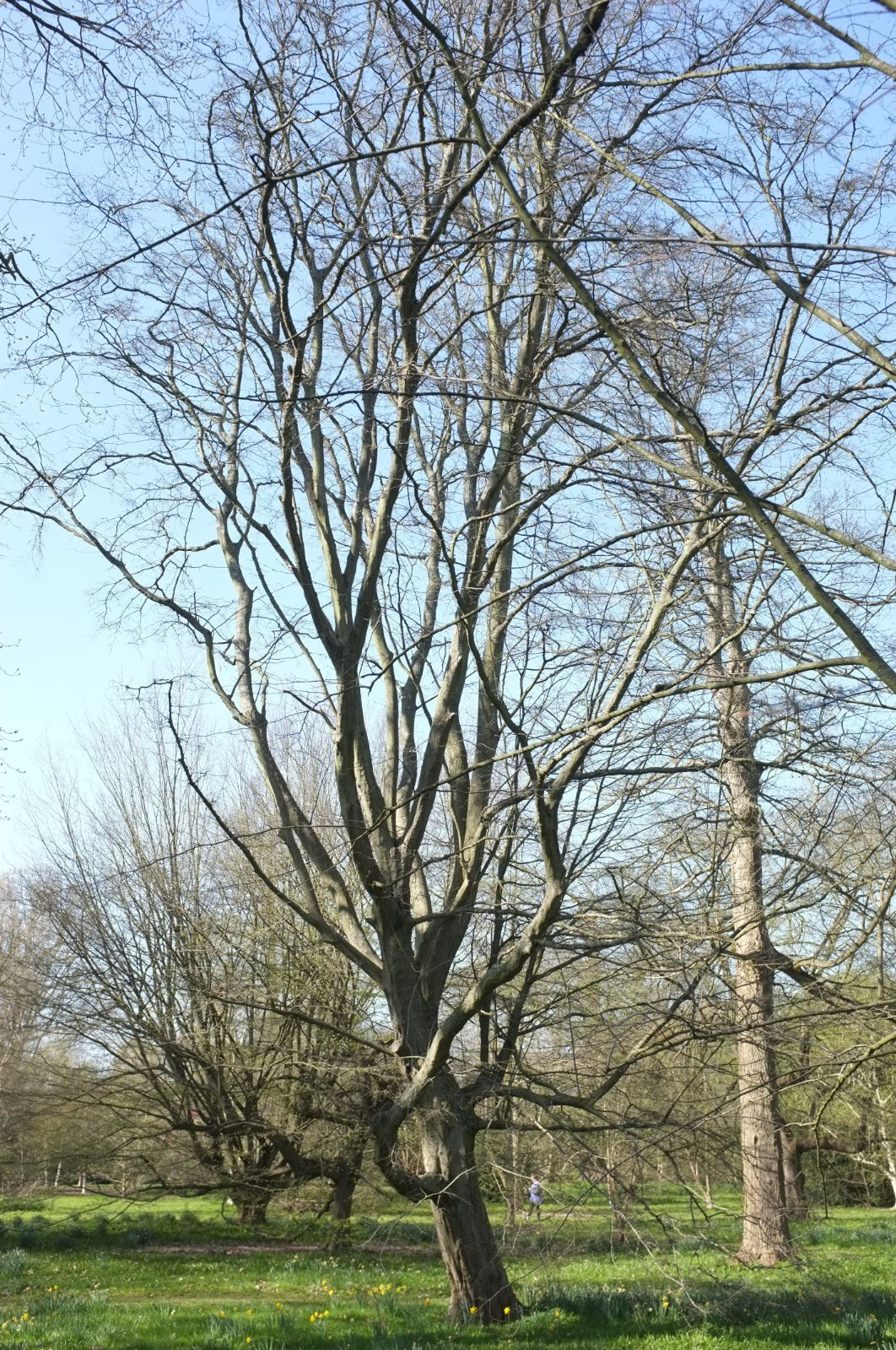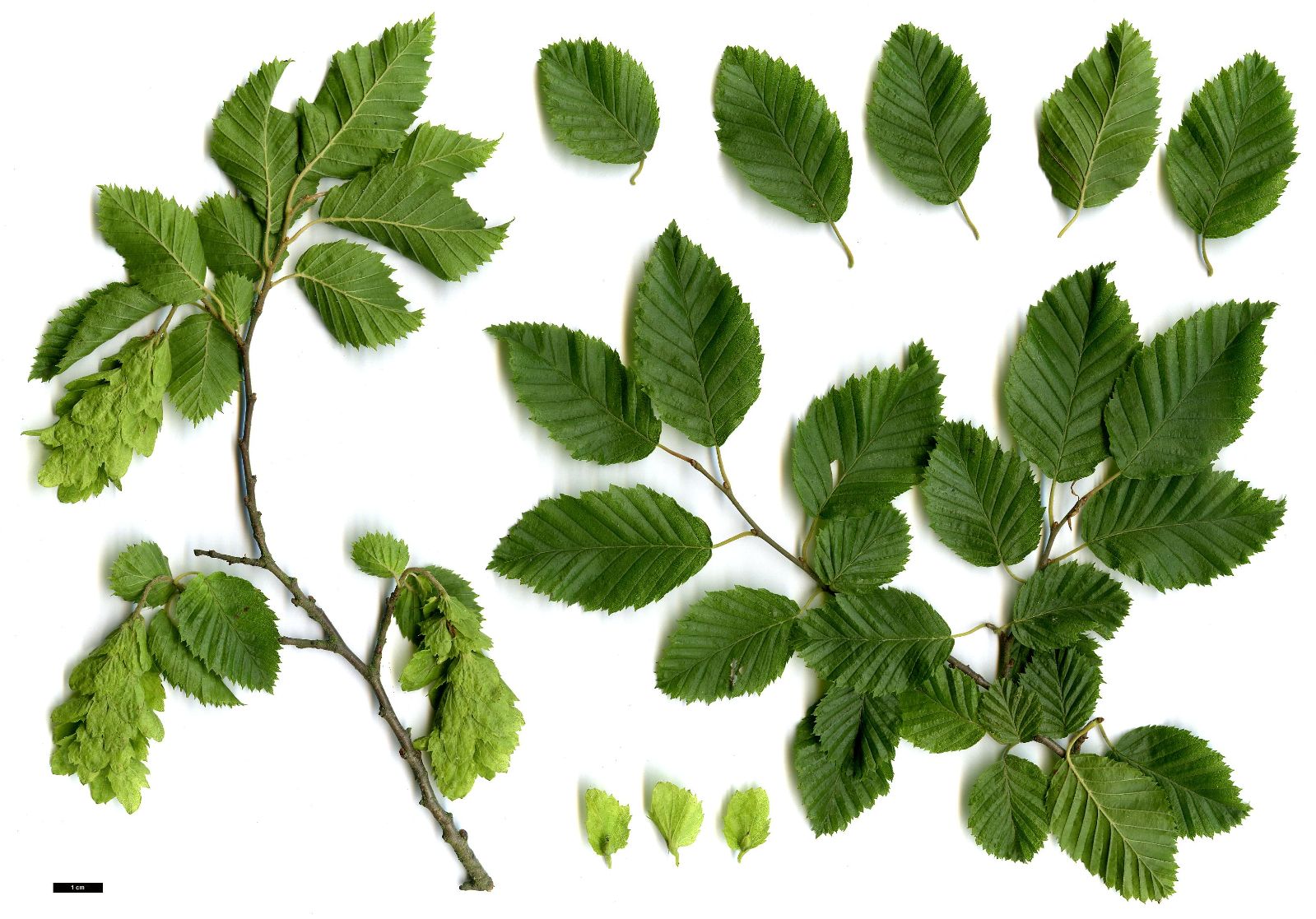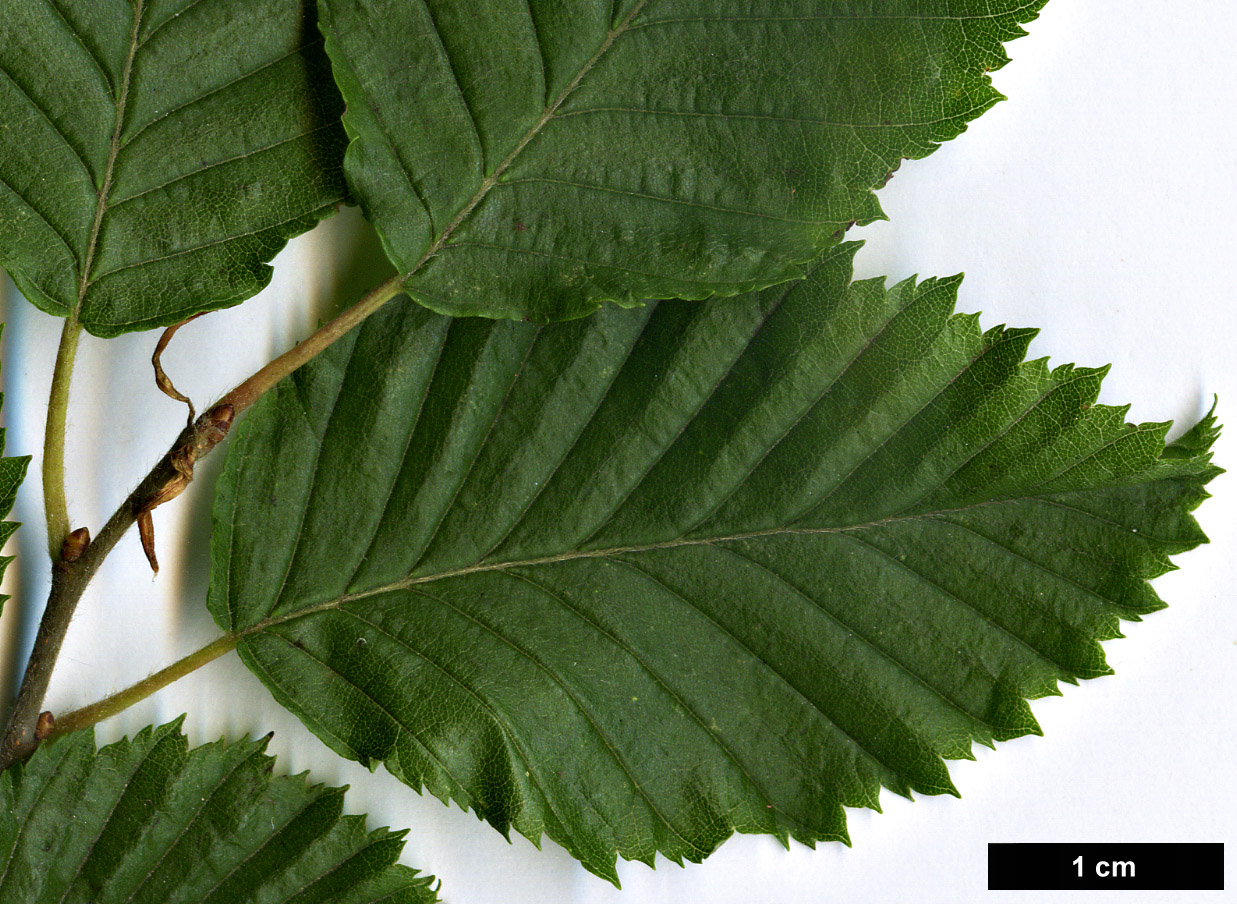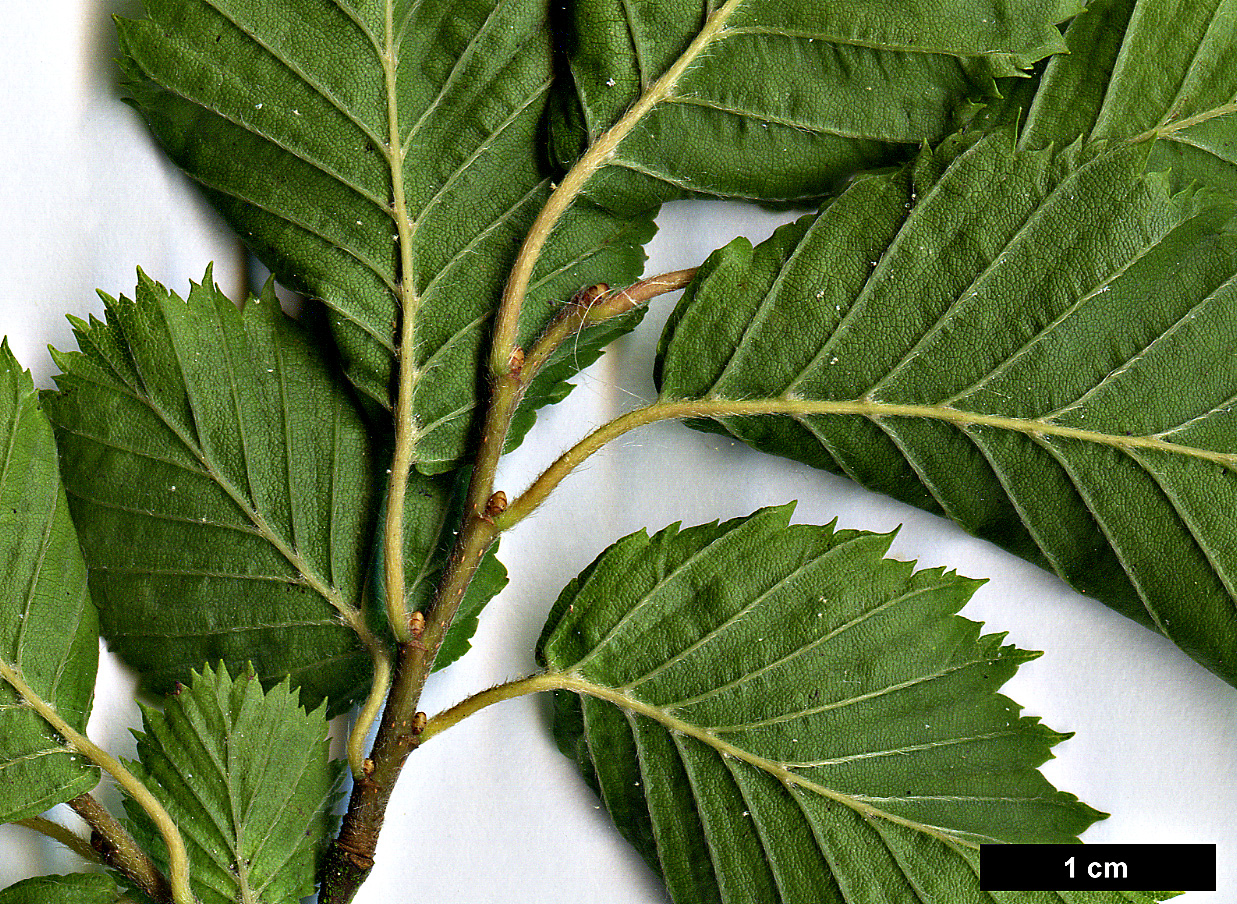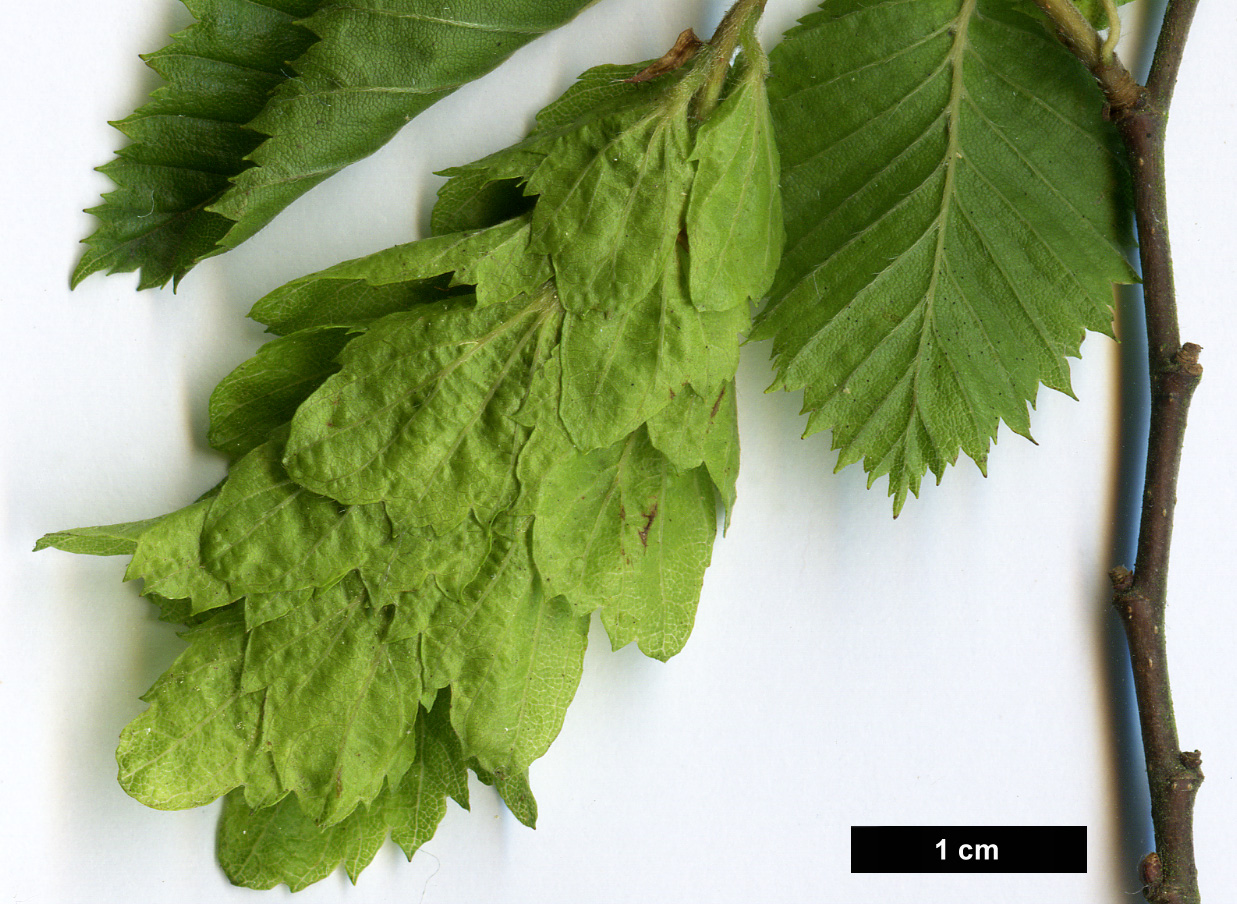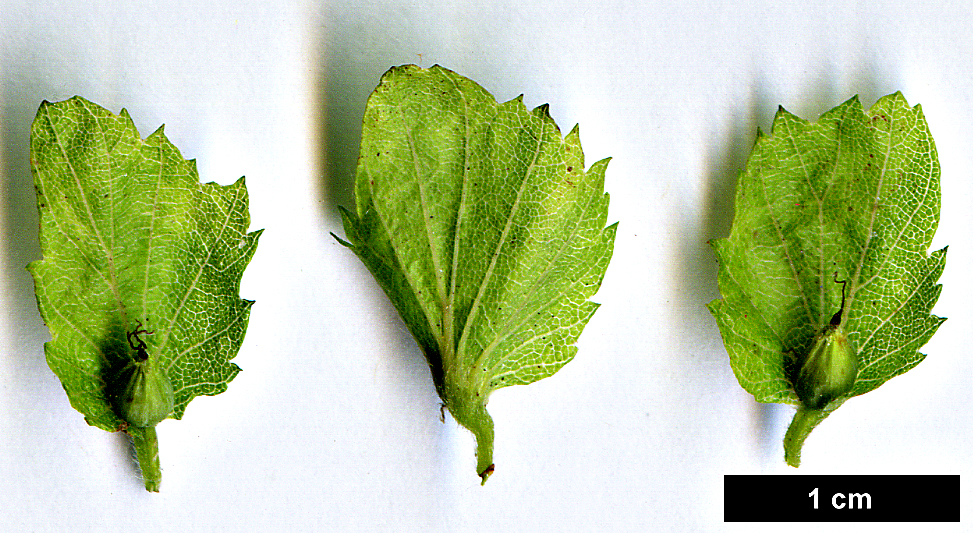Carpinus orientalis
Sponsor
Kindly sponsored by
Lord and Lady Aldington
Credits
Owen Johnson (2022)
Recommended citation
Johnson, O. (2022), 'Carpinus orientalis' from the website Trees and Shrubs Online (treesandshrubsonline.
Infraspecifics
Other taxa in genus
- Carpinus betulus
- Carpinus caroliniana
- Carpinus cordata
- Carpinus faginea
- Carpinus fangiana
- Carpinus fargesiana
- Carpinus hebestroma
- Carpinus henryana
- Carpinus japonica
- Carpinus kawakamii
- Carpinus laxiflora
- Carpinus londoniana
- Carpinus mollicoma
- Carpinus monbeigiana
- Carpinus omeiensis
- Carpinus polyneura
- Carpinus pubescens
- Carpinus rankanensis
- Carpinus × schuschaensis
- Carpinus shensiensis
- Carpinus tropicalis
- Carpinus tschonoskii
- Carpinus turczaninovii
- Carpinus viminea
Tree to 20 m, or a thicket-forming bush. Bark grey, finely roughened and fissured in maturity. Twigs slender, grey-brown, with silky hairs at first. Leaves ovate, 2.5–5 × 1.2–2.5 cm, shortly pointed; dark glossy green above, with silky hairs on both faces of the midrib at least; margin closely and rather regularly double-toothed; lateral veins in 12–15 pairs; petiole 6–10 mm, with silky hairs. Fruiting catkins 4–7 cm long; fruit-bracts D-shaped, 1.5–2.2 cm long, coarsely and irregularly toothed on the curved side, with the the straight side entire except from an auricle at the base which clasps the nutlet. (Bean 1976).
Distribution Albania Armenia Azerbaijan Bosnia and Herzegovina Bulgaria Croatia Georgia Greece Hungary Iran Italy Including Sicily Lebanon North Macedonia Moldova Montenegro Romania Russia In the far south Serbia Slovenia Syria Turkey Ukraine Crimea
Habitat Woodland and scrub
USDA Hardiness Zone 5
RHS Hardiness Rating H6
Conservation status Least concern (LC)
The natural range of Carpinus orientalis corresponds closely with the south-eastern half of that of C. betulus, but is patchier; the presence of C. orientalis as a wild tree in Syria and Lebanon is not confirmed (Plants of the World Online 2022), while in Iran, in the mountains south of the Caspian Sea, it is represented by its larger-leaved subspecies macrocarpa (see below). Hybrids with C. betulus (C. × schuschaensis) are known from the Caucasus; see the entry for C. betulus for a further discussion of possible intermediate forms.
The two species, in their pure state, are easily distinguished and are not closely related (Dong et al. 2022). Carpinus orientalis is one of the hornbeams with untoothed, ‘D-shaped’ fruit-bracts, and it is a smaller plant than C. betulus in foliage features, with particularly short and finely-toothed leaves. It is often described as a species of smaller stature, and can be a low bush in harsh and open conditions, but in woodland shelter it can become a substantial tree; a 1908 accession in the hornbeam collection at the Royal Botanic Gardens, Kew, is 20 m × 64 cm dbh (Tree Register 2022).
Carpinus orientalis was first introduced to the UK in 1735 for Philip Miller, the long-serving head gardener of the Chelsea Physic Garden (Bean 1976), but has never become a common garden tree, receiving a rather brusque dismissal from Bean himself: ‘It has not much to commend it to the notice of planters in this country except as being an interesting rarity’ (Bean 1976). Although it lacks showy flowers or fruit and its autumn colour is seldom bright, even in the continental climate of the Eastern United States (Dirr 2009), the small leaves mean that it is at least as graceful a tree as the genuinely ‘oriental’ hornbeams which have recently become fashionable collectors’ plants in the UK. (C. orientalis was named, of course, before any of the east Asian taxa were known to western botanists). It is also perhaps the most drought-tolerant Carpinus, a feature seldom shown by its Chinese rivals. Conversely, it is sufficiently tolerant of cool, Atlantic conditions to have grown to 8 m at the Linn Botanic Gardens in Argyll (Tree Register 2022). But in an exception to the fortunes of the genus as a whole, it was still perhaps offered in the UK in 2020 by just one single nursery, Mallet Court (Royal Horticultural Society 2020).
After a very mild winter, a tree planted by David Clulow in his old garden, Tilgates in Surrey, bore one evergreen branch in April 2016 (Tree Register 2022). Another oddity is the collection Cobham 226, which at Kew and at White House Farm in Kent produces a dense grove of vigorous, vertical stems from a much-tangled base (Tree Register 2022), and takes up a considerable amount of space.
'Bas'
A dwarf form growing to 1.5 m tall, formerly offered in the Netherlands by Rein and Mark Bulk (Esveld Nursery 2022).
'Calcarea'
Leathery leaves with very short, woolly stalks; grown at Brookside Gardens, Pennsylvania (Dendrologie Online 2022).
'Perdika'
Synonyms / alternative names
Carpinus orientalis 'Perdice'
Carpinus orientalis 'Perdica'
A dwarf plant found in Greece, with tiny rounded leaves (Burncoose Nurseries 2022). A plant at John Ravenscroft’s Cherry Tree Arboretum in Shropshire is so far only one metre tall (Tree Register 2022).
subsp. macrocarpa (Willk.) Browicz
Synonyms
Carpinus orientalis var. macrocarpa Willk.
Carpinus macrocarpa (Willk.) H. Winkl.
Differing from subsp. orientalis in its larger leaves (6–11 × 3–5 cm; petiole 1–1.6 cm) with a less regularly double marginal serration, its longer fruiting catkin (to 8 cm, with 6 cm peduncle), and its larger fruit-bracts (3–3.4 × 2 cm). (Winkler 1904).
Distribution
- Iran – Mountains near the Caspian Sea
RHS Hardiness Rating: H6
USDA Hardiness Zone: 5
Plants from the eastern end of the range of Carpinus orientalis were first distinguished by Heinrich Willkomm in 1887 as a variety of the species; modern authorities prefer to treat the form as a subspecies (Holstein & Weigend 2017). In terms of foliage and fruit it is larger than subsp. orientalis – and hence perhaps less distinctive, to eyes familiar with C. betulus – and the pollen grains are also significantly bigger (Akhondnezhad et al. 2011). A plant raised from seed by Matthew Ellis was 4 m tall in 2019 at his Grange Farm Arboretum in the Lincolnshire Fens (Tree Register 2022).

